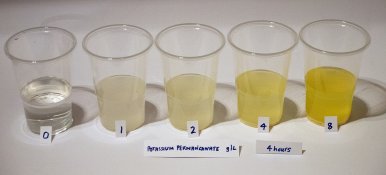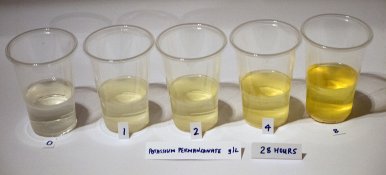endpoint
So you add some permanganate to get the orange color, and then more permanganate makes it colorless.
It would be nice to know when all the ascorbate was converted but can't compute anything without the
starting volumes and the volumes of permanganate solution that were added.
Yes,KMnO4 concentration is g/L added to the ascorbate/carbonate solution.Sodium ascorbate not ascorbic acid was used throughout.
A new result is that if KMnO4 is added to the orange solution it becomes colorless (oxalic +threonic acid?) and deposits a brown precipitate (MnO2?).
This agrees but does not prove that the orange color is diketogulonic acid ion.
So you add some permanganate to get the orange color, and then more permanganate makes it colorless.
It would be nice to know when all the ascorbate was converted but can't compute anything without the
starting volumes and the volumes of permanganate solution that were added.




